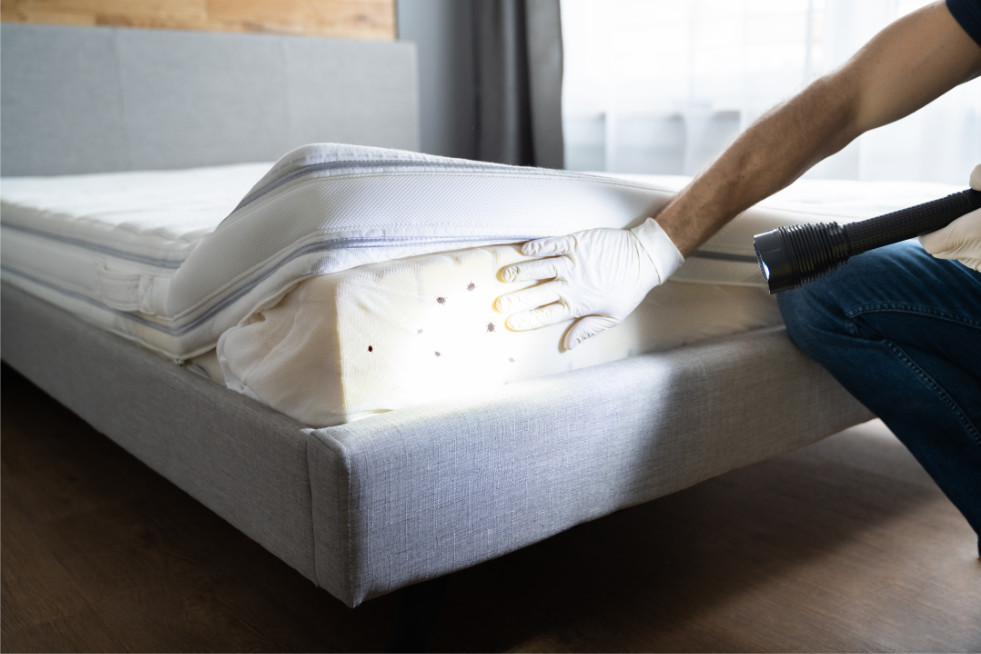Bed Bug Control Service
No one wants to imagine the bed they sleep in each night having bed bugs. If you suspect your home might have a bed bug infestation, schedule a home evaluation and a state licensed Adams technician will come to your location and inspect the situation.
Bed Bugs – What Are They?
The reddish-brown, oval-bodied bed bug feeds on the blood of any warm-blooded animal, making them a parasitic insect. The name “bed bug” is derived from the insect’s preferred habitat of beds, couches, and anywhere else where a person may sleep or lounge indoors. However, they also can be found in electric appliances, computers, printers, and behind pictures or electrical outlets.
Bed bugs, though not strictly nocturnal, are mainly active at night and are capable of feeding unnoticed on their hosts. Bed bugs can enter your home undetected on luggage, clothing, hand bags, used furniture, and other items. When bed bugs first infest, you may not be able to visibly see them due to the fact that they are rarely active during the day and hide in cracks and crevices. As the infestation grows heavier, you may find bed bugs in the folds of mattresses and bed covers. The best way to find out if you have bed bugs is to have a professional inspection by an experienced pest control company.

Do you have bed bugs?
Call 229-435-6257 to schedule a
bed bug control treatment!
Signs of Infestation
If you wake up with itchy areas you didn’t have when you went to sleep, you may have bedbugs. Some people will experience “bite marks” when fed upon, while others will have no sign they have been bitten. Other signs that you have bedbugs include:
- Blood stains on your sheets or pillowcases
- Dark or rusty spots of bedbug excrement on mattresses, bedding, and walls
- Bedbug fecal spots, egg shells, or shed skins in areas where bedbugs hide
- An offensive, musty odor from the bugs’ scent glands
Our Bed Bug Control Service Process
Initial
Inspection
A technician will come to your home and inspect each room for bed bug activity. During the inspection, we will determine the location(s) of the bed bugs and areas that will require treatment. We will inventory the number and size of beds needing treatment. This is done to ensure the mattress and box spring encasements fit properly.
Develop Treatment Plan
Based on the results of our inspection, we will tailor a treatment plan for your home. We will review the details of this plan with you prior to performing any treatment.
Perform
Treatment
We will treat the bed bugs according to the treatment plan that was developed for your home. As part of the treatment, each mattress and box spring on beds requiring treatment will be encased. The encasements will help prevent future infestations and protect the mattress and box spring.